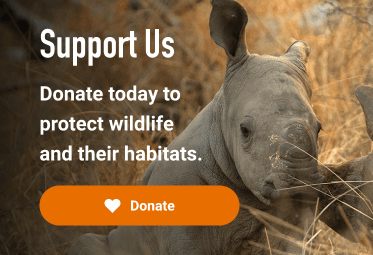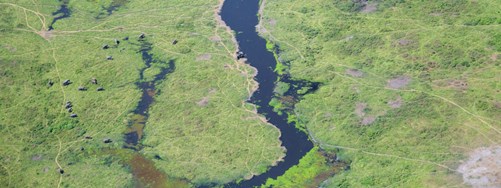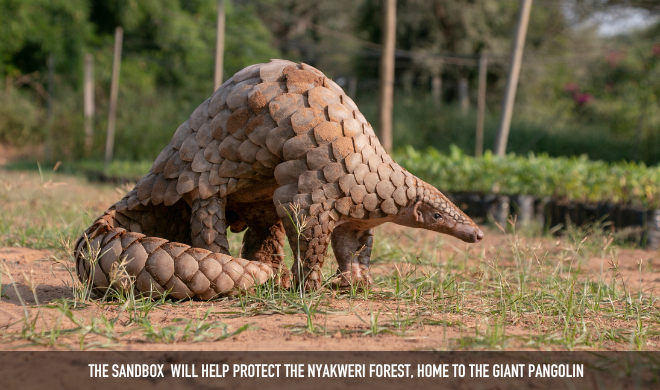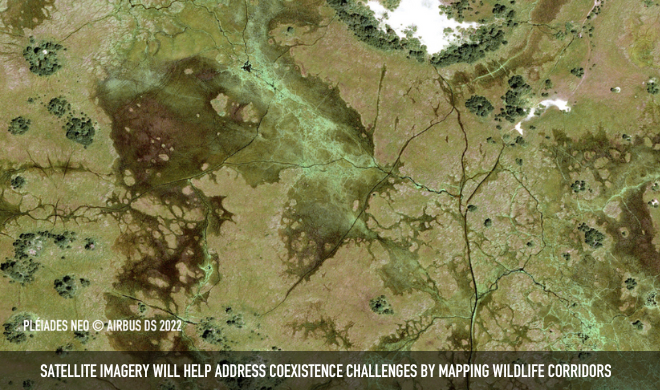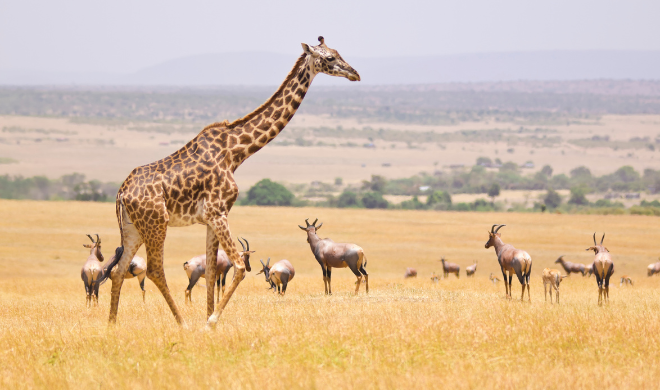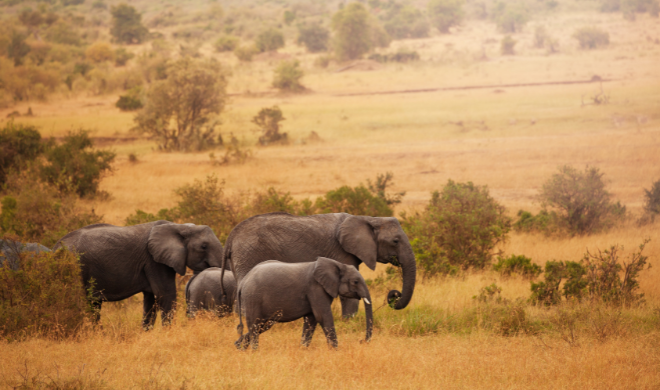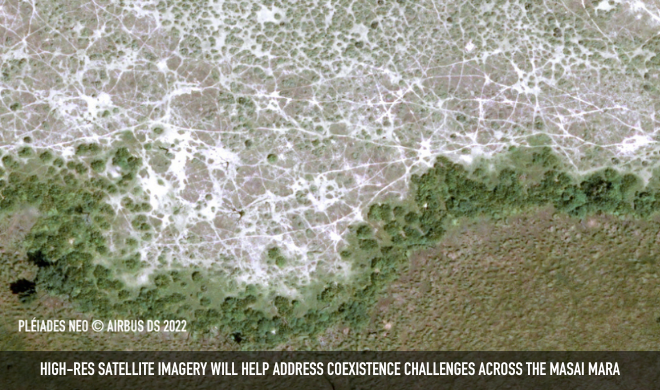Advancing Conservation with Satellite Imagery
Partners: Mara Elephant Project, Langland Conservation, Loisaba Conservancy, Centre for Ecosystem Restoration and Airbus Foundation
Key Species: Giant Pangolin, African Elephant, Leopards, Lions and Indigenous trees
2023 Award Winners
The Connected Conservation Foundation and Airbus Foundation are awarding four runners-up as part of the Satellites for Biodiversity Award. The winners include Mara Elephant Project, Langland Conservation, Centre for Ecosystem Restoration Kenya and Geoxfinity.
All organisations are working in the same ecosystem in Kenya on similar challenges, with similar satellite data requirements. By aligning requirements, we aim to establish a new collaborative initiative: The Masai Mara Satellite Sandbox.
The Satellite Sandbox will accelerate the application of Earth Observation data and AI for conservation in the Masai Mara region and beyond. Combining the power of high-resolution satellite imagery, with local GeoSpatial and conservation expertise to monitor wildlife, habitat and landscape changes over space and time to address biodiversity, climate and coexistence challenges across the Masai Mara.
The data will help map many important aspects of this unique ecosystem, including settlements, agriculture, surface water, human infrastructure, forest and vegetation cover, fence lines, boundaries, invasive species and wildlife corridors. Having this holistic picture helps inform adaptive management for conservation projects and provides a baseline to measure progress.
Local conservation teams in Masai Mara, Kenya, will receive a 30 cm Pleiades Neo Mosaic, enabling them to advance their research and conservation efforts:
- Protecting the Giant Pangolin and Nyakweri Forest
- Safeguarding species and local livelihoods from the spread of invasive species
- Restoring Wildlife Corridors for Human-Wildlife Coexistence
- Plotting land boundaries to establish geo-fences that raise alerts when elephant trackers cross, to reduce human-wildlife conflict
With increasing accessibility to satellite data globally, the initiative aims to make learnings and insights from these projects available to the conservation community for wider benefits.
Runners up:
Protecting the Giant Pangolin and Nyakweri Forest, Langland Conservation Ltd
The Nyakweri forest, the cherished home of giant pangolins, faces imminent threats from deforestation, charcoal burning and the construction of electric fences. These activities are causing habitat fragmentation and pangolin deaths.
To combat this urgent issue, Langland Conservation is using this imagery to support The Pangolin Project, which is protecting giant pangolins in the Nyakweri Forest in southern Kenya. Their remote sensing project has mapped indicators of habitat degradation and fragmentation across a 1,000 km² landscape, using a deep learning model trained on the Pleiades Neo imagery. By mapping fence lines, roads, buildings, and vegetation, the team is seeking to strengthen vital protection strategies, such as improving connectivity between areas of viable habitat. Through the success of this project, Langland is aiming to demonstrate a low-cost and trainable process for AI use in conservation.
Safeguarding Elephant Habitat, Mara Elephant Project
The Maasai Mara faces multiple threats, including population growth, land fragmentation, deforestation, encroachment from human settlements, charcoal production, overgrazing and human-elephant conflicts. The space battle has intensified.
High-resolution satellite imagery will be used by the Mara Elephant Project to map land cover and overlay real-time and historical movement data from satellite-collared elephants.
The layered information will help MEP keep communities and elephants safe and foster harmonious coexistence in the Maasai Mara.
Safeguarding Rangelands from Prickly Pear Cactus, Loisaba Conservancy
Kenya's rangelands face growing threats from Opuntia (prickly pear cactus), a noxious invasive species that reduces forage availability for wildlife and livestock, increases soil erosion and harms biodiversity. Mechanical removal is recommended to minimise injuries to livestock caused by the plant’s spines, which can lead to reduced milk production and even death.
Loisaba Conservancy is harnessing high-resolution satellite imagery and machine learning to map, monitor an reduce Opuntia across its 230 km² landscape. Insights are being shared through community engagement to strengthen regional invasive species management.
You can visit all of our 2023 Award winners here.

